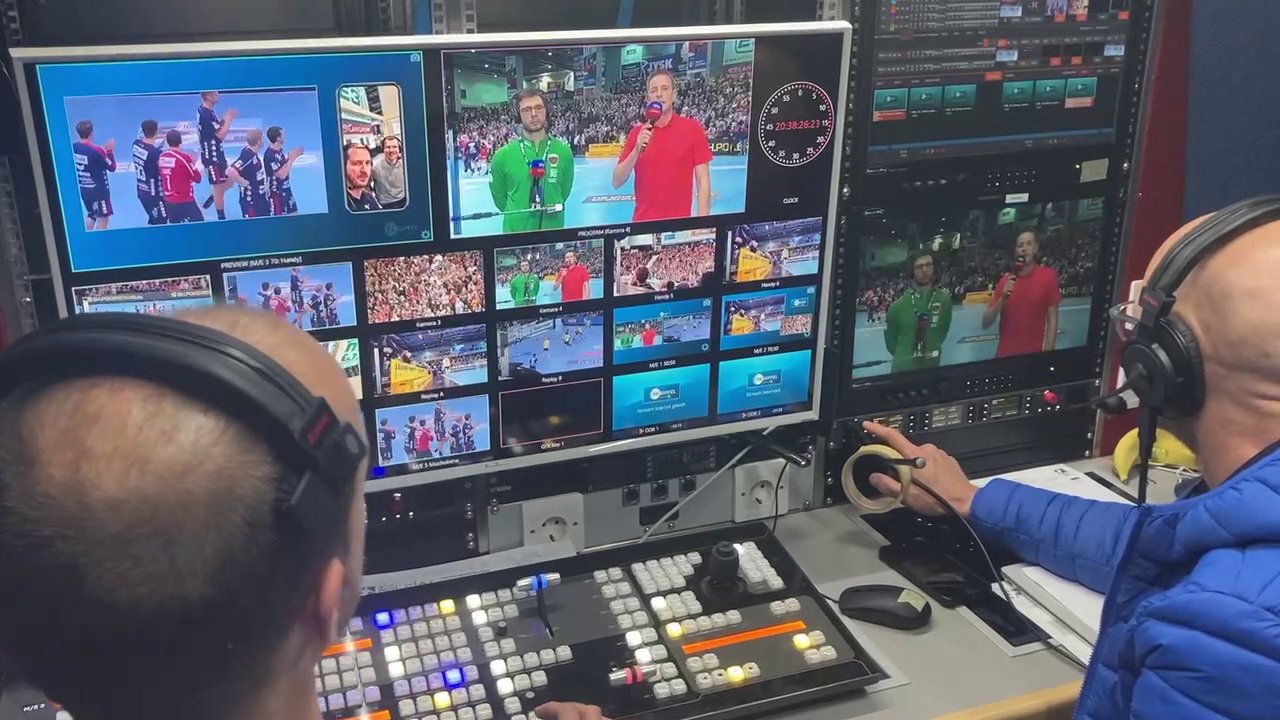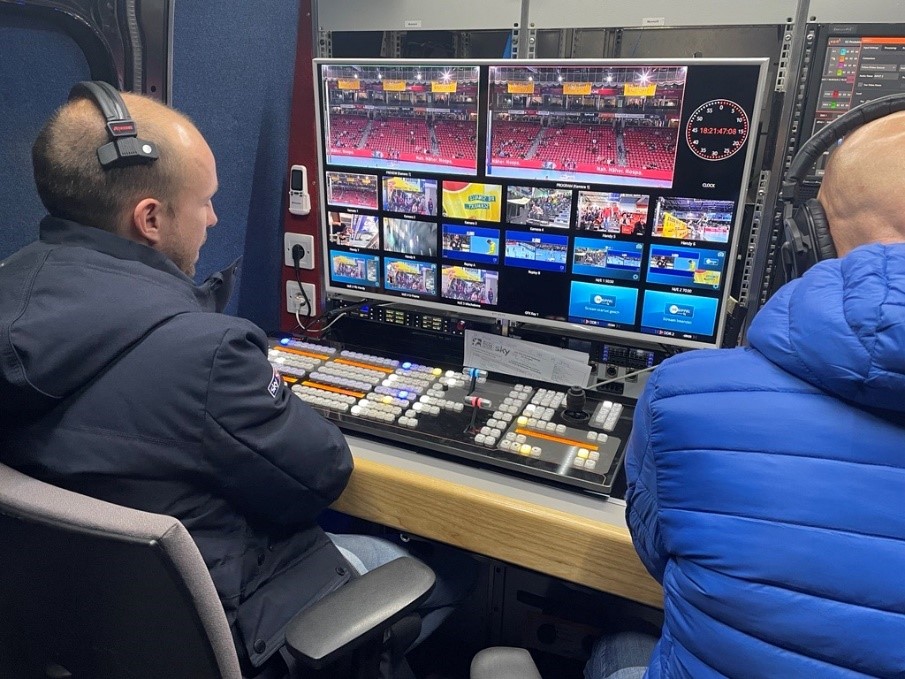How Covid Forced Broadcasters to Go Remote in 2020
Up until two years ago, cloud-based production was a choice, since then it’s become a necessity

The migration of live production workflows to the cloud to support remote working has been under consideration since the early 2000s, however, until now, major broadcasters and production companies have been unwilling to take the leap. This is related to a number of factors: IP network speed and reliability, economical and flexible cloud storage solutions, and a general unwillingness to move away from a familiar and time-tested approach. However, in early 2020, this all changed as a consequence of the global Covid-19 pandemic.
Traditional working practices for film and video production often require large numbers of people to work in close quarters. When live sports are added to the mix, with stadiums filled with people, it becomes impossible to mount a traditional sport OB without the risk of it becoming a super spreader event.
Broadcasters were faced with a massive increase in demand for programming from audiences who were isolating at home as a consequence of the Covid-19 lockdowns, while simultaneously faced with the inability to use traditional approaches due to the need to protect the health of production staff.
It Changed Everything
It’s been said that for change to be successful, three things are required: desire, opportunity, and necessity. Until now, the third item on the list has been lacking. The pandemic changed the way the world does everything, and video production was no exception. Necessity has now entered the equation, and broadcasters and production companies are scrambling for ways to meet the demand for content, while remaining safe.
Broadcasters like Discovery and Comcast have already moved their supply chain to the cloud in terms of the delivery of finished programs, however, until recently, remote contribution was restricted to slower-than-real-time file delivery from Wi-Fi hotspots or ethernet connection points.
In the past few years, it has advanced to real-time 4k streaming video contribution over bonded mobile networks using backpack systems like the ones from LiveU. However, in the background, several factors have been converging to make fully remote, cloud-based production a realistic option:
- Until recently, costly dedicated enterprise networks were required to support live video streams and were prohibitively expensive for most productions, therefore limiting the number of locations where they could be used. Average internet speeds have nearly doubled in the past five years while prices have come down at the same rate. Consumer-grade connections with data rates of up to 1Gbps are now widely available and provide a cost-effective solution for remote contribution links. They are now being viewed as a reliable replacement for scarce and costly satellite uplinks.
- In situations where access to a fixed broadband connection is not available, mobile networks are filling the gap. These networks have moved from the 3G data rates of 3Mbps only a few years ago, to the widespread availability of 4G networks with data rates of 20Mbps. 5G networks have been rolled out in many urban areas, and not only provide an average data rate of 100+ Mbps, but also offer quality of service provisions to ensure reliability of transmission. The upload speeds have also increased enough to make real-time control of remote systems feasible.
- The cloud hosting environment has matured, with relatively inexpensive options provided by AWS, Google, Docker, and others. The “hardware on demand” model offered by cloud services significantly reduces capital expenditure for both broadcasters and production companies.
- The introduction of new media-centric video over IP transport protocol, NDI (Network Device Interface) allows for real time, ultra-low latency video on existing IP video networks. Developed by NewTek, NDI is being used by vendors like Sony and Imagine.
Advances in broadcast technology tend to move in one direction—increased quality, increased functionality, and increased costs. These new developments move in multiple new directions—increased flexibility and reduced costs, without a reduction in quality.
The professional video industry's #1 source for news, trends and product and tech information. Sign up below.
Although many of the productions that have moved to cloud-based workflows did so in response to emergency conditions, it is unlikely that all of them will return to previous approaches as the world begins to open up again. These new systems have been “battle tested” and have stood up to the challenge.
Just as offices have moved permanently to hybrid working, the broadcast industry is likely to continue to use hybrid workflows, using traditional studios and OBs where appropriate, and remote working where it is most effective.
To be fair, using compressed NDI feeds over consumer grade networks is not up to the “gold standard” of SDI, C band, and now 2110, but the convergence of all these technological advances has brought us to a watershed moment when the old joke, “fast, cheap, good—pick two” is in danger of being retired.
Two Case Studies: Media.Monks and Sky Deutschland
In late 2020, Netherlands-based marketing and advertising services company Media.Monks was commissioned by a major sports league to produce 20 games in 4K UHD. However, thanks to Covid-19 restrictions, the on-site OB crew would be limited to two people at each match, and they would have only a 4x4 tabletop to house their equipment.
They developed a workflow to produce multiple. simultaneous games that would include six unmanned cameras placed around each arena supported by a camera technician and one encoding engineer using Vectar Plus, a live production solution from Vizrt.
“We looked at other products in the cloud to serve our purpose and there was no product out there that could handle the workflow the way we wanted it to go,” said Lewis Smithingham, Media.Monks Director of Creative Solutions, “Our production trucks can work around the world in a single day. It’s fascinating to see that type of business transformation occurring.”
A big plus is that this approach has enabled Media.Monks to keep its global staff of 6,000 people fully employed throughout the pandemic.

Sky Germany has combined cloud-based production technologies with 5G contribution to transmit a handball match. The production was executed fully in the cloud with a mixture of broadcast and mobile phone cameras, LiveU’s 5G transmission technology, Vizrt’s switching, graphics, and sports analysis tools, all deployed in AWS and facilitated by NDI (Network Device Interface), a high-performance standard that allows anyone to use real time, ultra-low latency video on existing IP video networks.
As well as being a music producer and composer, John Maxwell Hobbs is CEO of music technology startup Delic, media consultant and the former Head of Technology at BBC Scotland.

